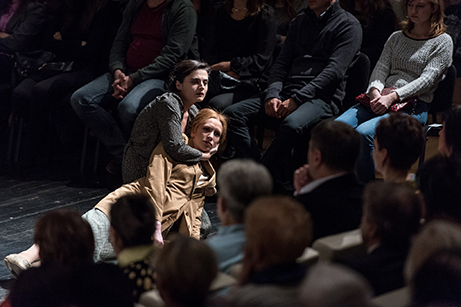The evolution of theatre began in the Middle Ages. Its creation was a natural process that grew out of a need to share stories with audiences. However, it was not until the Renaissance that the practice of theater was officially legalized. It took place in Italy during the Renaissance. Initially, the theater was only performed in Rome. Today, there are many other places around the world where the art of performing plays is popular.
In the Middle Ages, theatres were built on the ruins of ancient Greek structures. The first theatres included a high stage and an orchestra. These early theatres were free to attend, and their audiences were not paid for. The actors were visible. The chorus remained hidden, but the actors were more prominent. They would perform a play for the entire community. In later times, the audience would have to pay an entrance fee.

During the Middle Ages, theatre in England was regulated by the state. During the mid-18th century, it became popular. It featured musical and dramatic performances, religious satire, and melodramatic plays. Its popularity reached its peak in the 19th century. The next phase of the development of theatre started in the 19th century. It moved from the classical period to the neoclassical period.
In the early Middle Ages, the theatre began to re-establish itself in Europe. At this time, it began to evolve as a secular entertainment. Aeschylus, the founder of Shakespeare, adapted Greek and Roman myths into secular shows and played with a chorus of fifty actors. He later reduced the chorus to twelve actors. The popularity of the theater also prompted its widespread growth in the Middle Ages, but only a few countries had a professional theatrical society.
In the fifth century, the Romans introduced portable stages. Originally, they had a cart to travel from place to place. The actors and actresses performed on a stage that was used as a temporary stage. The ancient Greeks developed the art of acting. In the fourth century, the Romans brought it to Sicily. During this period, the theatre’s popularity was spread throughout the Mediterranean. Horace and his contemporaries based on Greek and Roman cultures, this style of performing was popularized and became common.
The emergence of theatrical performances in Europe has been traced back to a number of centuries. Its history dates back to the sixth century BC. The ancient Greeks had a monopoly on presenting drama. The word “theatre” means ‘place of seeing’, and it was conceived as a way to create a theatrical environment. In Athens, a theater was a large, rectangular building.
How did theatre start?
The earliest form of theatre, however, dates back to the seventh century BCE. The Greeks believed that the first theatrical performances were performed as festivals that celebrated Dionysus. As time passed, the genre evolved and developed into what we know as theatre today. During this time, there was an evolution of the genre. The first surviving examples of theatre can be found in the United States. The term was used for the first motion-picture theater, which opened one hundred years ago in Pittsburgh, Penn.

The first plays were written by a priest named Thespis. They were based on real events. The first actors were called chorus. They were called the actors’ characters in a play. They performed songs and dances for the gods. They had a lot of power to influence the audience. Eventually, they would become the performers, and the theatre became known as a form of entertainment. Its popularity began to spread, and the first productions included a variety of genres.
The first playhouse was in Athens, where the actors were called Thespis. These performers would act out a poem and sometimes even leap on wooden carts. Their performances were not confined to the realm of the gods. The actors were also allowed to perform their work in front of their audiences, but the pope banned the theatrical productions. Nevertheless, the art of performing arts was a part of culture.